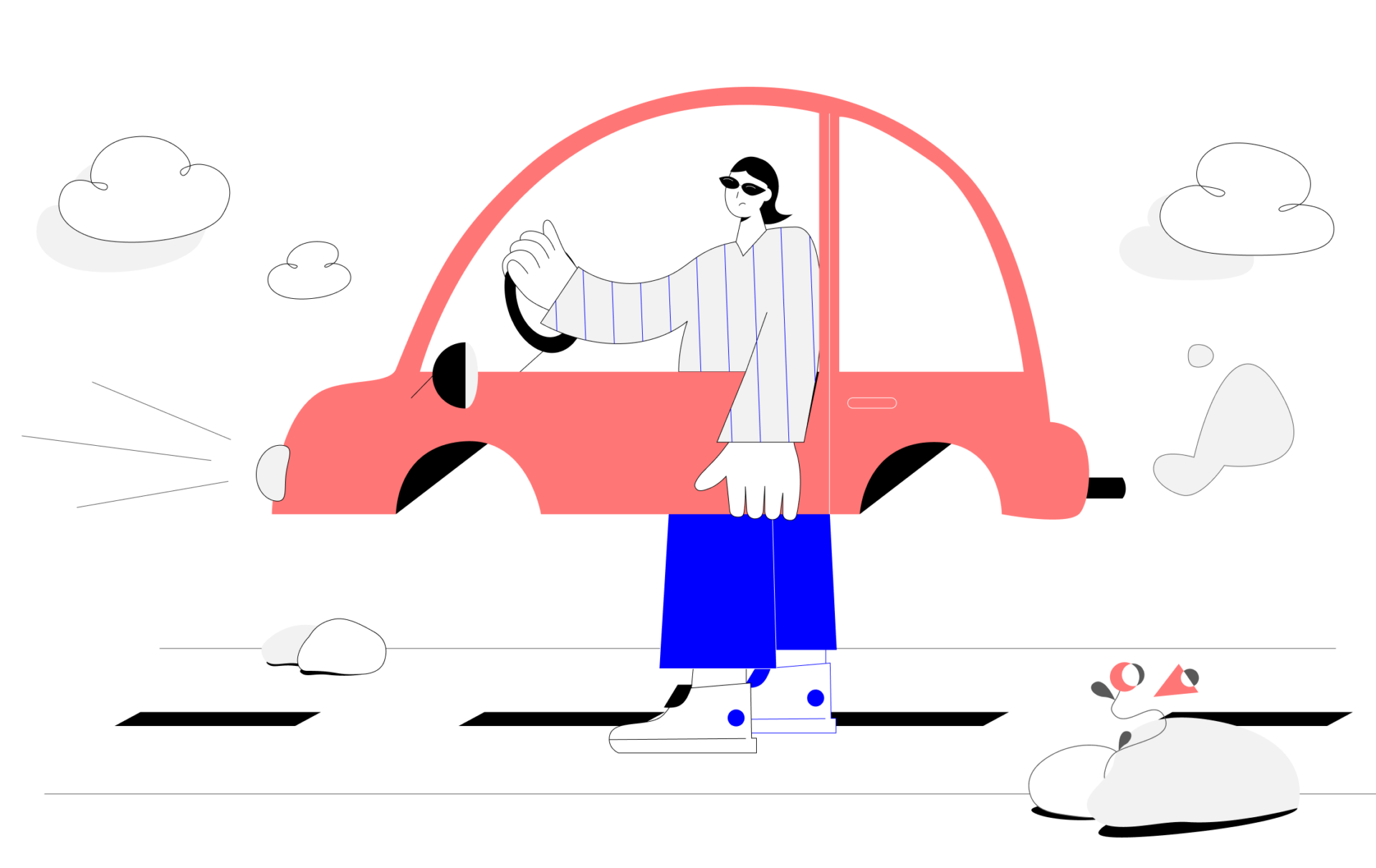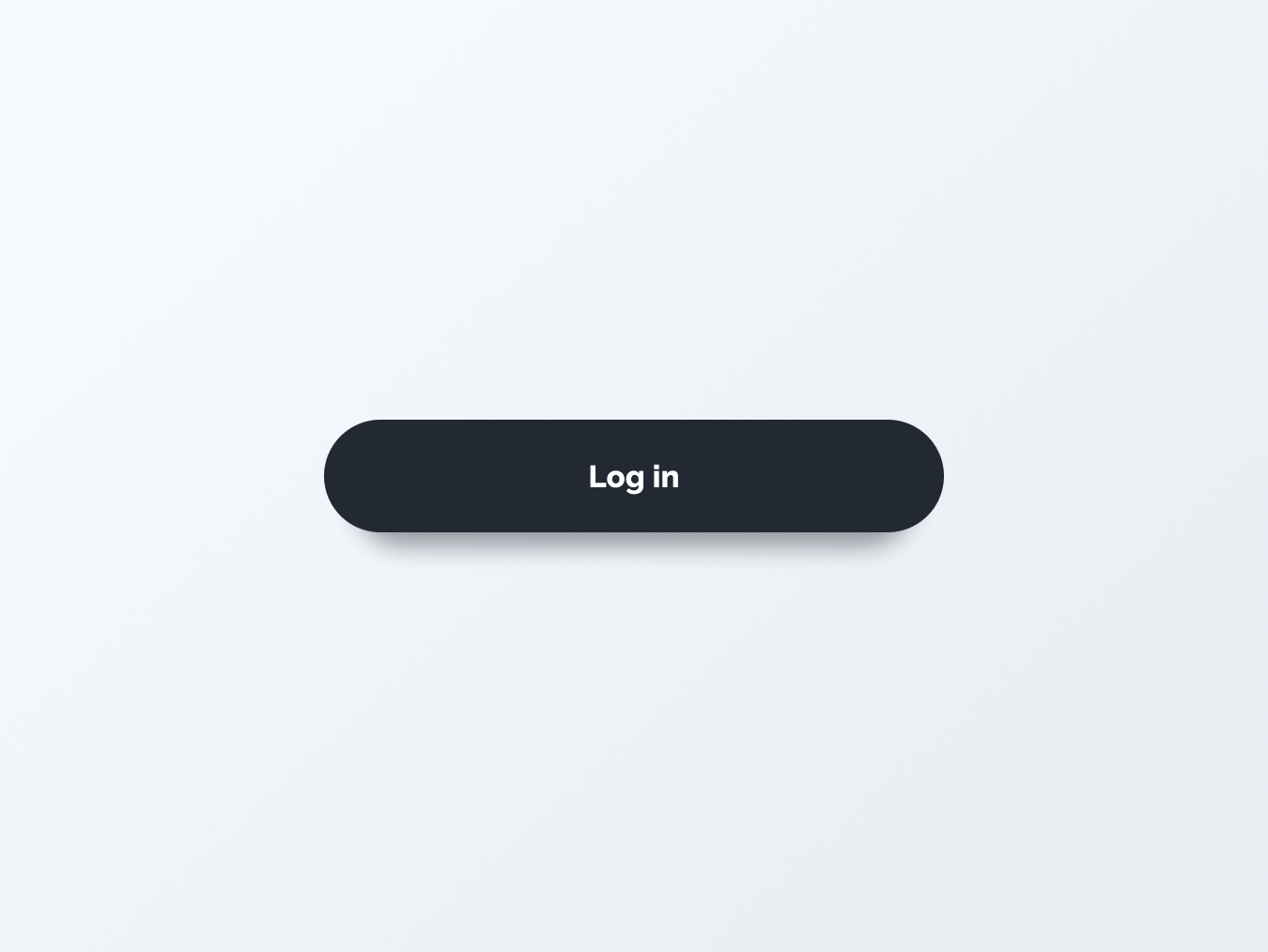
Design is About Experience: 7 UX Trends to Be Aware of
Once again, design is responsible for both how the product looks, i.e. UI, and how it feels when used, i.e. UX. The structure and logic dictate how we perceive the product and whether we enjoy using it or not. Interestingly, 90% of people will leave the site or app with a poor user experience.
The golden rule says: “If you do not notice the design of a product, then it’s good.” That’s why UX design trends are all about making the product feel native, familiar, and natural when the user interacts with its components and functionality.
UX trends ≠ UI trends

Although complementary, user interface (UI) design and user experience (UX) design are two different activities.
The user interface is everything you can see on the screen of an app or a site and can interact with — blocks, buttons, icons, logos, colors, typography, etc. On the other hand, user experience is something you can’t see, you can only feel it. When designing UX, the team works on making interactions with UI as frictionless and convenient as possible. They implement UI elements so that the user can achieve their target — be it a sign-up, search for information, purchase, whatever — in a fast and intuitive way.
That’s why when I talked about trends in UI design in the previous article, they were mostly related to the visual aspect of design; whereas, trends in UX design reflect the functional aspect. Ready to start?
1. Trouble-free authentication
According to Statista, an average user will interact with approximately 3.6 devices and connections in 2023. It’s only natural because today, almost any youngster has a smartphone, a tablet, and a desktop, and they use all of them daily. They are accustomed to being always connected and expect to seamlessly switch between all devices they use. That’s why it is a pain in the neck for them to endlessly enter their passwords into all the same apps across all devices.
This young generation dictates a new UX trend, which is hassle-free authentication. Along with typical sign-in/sign-up options, it’s worth implementing other methods like social access (via Google, Facebook, etc.), biometric authentication (with fingertips or face ID), or single sign-on.
Single sign-on (SSO) is arguably the next big trend in UX design as it allows for logging in to multiple apps automatically the way it works with Google, where the user enters one account and effortlessly interacts with all apps in the suite.
2. Mobile-first approach

Although listed among user experience trends, the mobile-first approach has already become one of the best practices in design and development.
Earlier, the design was created for desktops first and then, transferred to smaller screens. As a result, it looked compressed and didn’t feel natural for mobile users. Why so?
When compared to desktops, mobiles are more limited, and the UX design should account for this. To create a smooth user experience, the designer needs to start working on the smallest screens first. To fit in the interface elements, they choose only what is really important to the user. That way, the designer creates a sort of foundation to build upon. They then expand the design and add more elements to fill the bigger screens.
3. Microcopy
As the name suggests, microcopy is a short text. It complements interface elements like buttons, menus, fields, etc., or serves as a function explainer. Many, however, underestimate the importance of microcopy in the product’s design.
UX writing is not about adding a salesy flavor or decorating visuals with words; it is about making sense of the interface and guiding users forward on their journey in case they can’t find their way around. So I would even include microcopy in the list of usability trends as it helps users understand quickly what they need and where to get it. That’s why quality microcopy must be clear, concise, and appropriate, both for the audience and the product.
What’s more, microcopy plays a strategic role in UX design. Along with guiding users, it engages them and brings them closer to conversion goals. Words indeed have much power, so use them in a smart way.
4. Microinteractions

Although microinteractions are just tiny animated elements of the interface, they do have a huge impact on making the user experience positive. That’s why it rightfully belongs to this collection of current UX trends.
Just like with microcopy, the goal is to communicate feedback like hints, progress statuses, or results of specific actions — but, in an entertaining way. As a result, navigation becomes more intuitive, whereas the level of user satisfaction from interacting with your product grows.
Recently, I’ve stumbled upon an article by Toptal, where they outline a few tips on how to design microinteractions, and I can’t agree more. So make sure to:
- Create an enticing habit loop, using the cue-routine-reward model.
- Keep animation functional.
- Use one microinteraction per action.
It’s worth noting that microinteractions play a supplementary role in the UX design, meaning they should feel natural and unobtrusive. Always keep that in mind.
5. Motion graphics
Motion graphics is emotional. It’s the easiest way to attract the attention of users and guide them where you want them to go. This contributes to learnability and intuitiveness, the core characteristics of UX design.
In fact, animations serve several purposes in the digital product’s design:
- Creating natural human-like interactions
- Giving the visual cue of what’s happening on the screen — e.g. transitions, status changes, notifications, etc.
- Pointing to the important content elements
- Providing feedback or response to the user action
- Delighting users
Don’t use animations only because they are listed among the latest UX trends though. The key here is to make sure that animations are meaningful. They should help users achieve their goals and not distract them instead.
6. Inclusive experience

I wish more products were in line with this UX trend as it is centered around the concept of accessibility to all users no matter the context.
Unfortunately, most products are not equally friendly to everyone. Obviously, people with disabilities may find it difficult to interact with certain interface elements or content types, and thus, get excluded from using the product. Inclusive design aims to satisfy the needs of both majorities and minorities that make up the target audience.
It doesn’t mean that the product’s design should be based on the one-size-fits-all principle. Instead, a designer should consider different user scenarios and implement them in the interface. For instance, along with typical graphical interface interactions, the designer can make provisions for voice-controlled commands. This will accommodate the needs of visually impaired people or simply those who are on the go.
We are living in a diverse world. Understanding this and implementing the idea of diversity in design makes a digital product attractive to a wider audience.
7. Immersive experience
AR- and VR-focused designs can hardly be referred to as new trends in UX. We have seen them before in apps like IKEA Place which shows how true-to-scale 3D furniture pieces match the user’s interior, or games like Pokémon GO that allows gamers to search for virtual Pokémons in real-life locations. And such an approach is still relevant for creating engaging user experiences. But now that we are actively exploring the metaverse, the trend for immersive designs has shifted gears and requires a totally different approach to UX.
In the context of the metaverse, we are talking about designing whole new virtual worlds. This is quite challenging as it implies reformatting the UX design rules, meaning we should start thinking of a user not as an external consumer of a product and its features, but as an immediate participant who ‘lives through’ the near-real experiences we create.
To make the line between the virtual and real worlds almost indiscernible, user interactions must happen the way they do in daily life, which translates into a multitude of use cases and scenarios.
To sum up
Users are demanding. It’s no longer an easy feat to grab their attention and most importantly, keep it. That’s why using UI/UX design services is a must today. If you want your digital product design to align with the expectations of the modern customer, drop us a line!
Author
back to all postsOUR RECENT PROJECTS
 Custom Logo Design For An Android App Emulator
Custom Logo Design For An Android App Emulator
- gaming app emulator
- logo concept & design
- brand identity
- brand book
 Enhancing Platform Usability with UI/UX Design
Enhancing Platform Usability with UI/UX Design
- gaming app emulator
- usability improvement
- data hierarchy
- visual design




